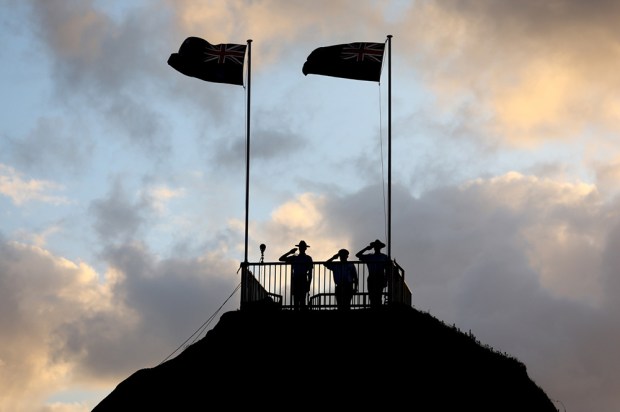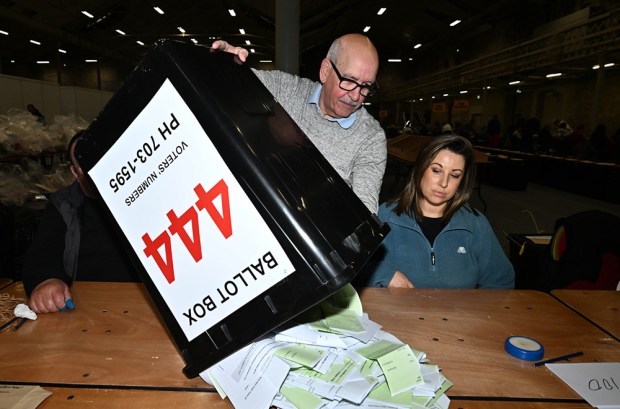The 1967 referendum exemplifies the difficulties of symbolism in Indigenous affairs. Over 90 per cent of Australians voted ‘Yes’ at the constitutional referendum held that year on May 27. It was the most successful in the nation’s history, a watershed in the Indigenous civil rights movement. Aboriginal people won equality, citizenship, and the right to vote. Many respected historians, activists, politicians and authors have echoed this. So significant is the date that our Prime Minister desires to mark its 50th anniversary with another referendum. But it’s not that simple.
The proposal was unambitious: amend Section 51 and allow the Commonwealth – not just the States – to make laws concerning Aboriginal people, and repeal Section 127 to have Indigenous Australians counted in the official census. The textual changes to the Constitution made no reference to equality, citizenship, or voting rights, but that’s what Australians were convinced of at the time.
The Yes campaign was led by the Federal Council for the Advancement of Aborigines and Torres Strait Islanders. Partly because of genuine ambition, but also as a matter of strategy, they elevated referendum into the realm of symbolism and persuaded the public that the changes were of a greater magnitude than in reality. The Age told readers it was ‘a simple matter of humanity.’ The Australian said ‘on no account can this be refused. If it is not carried that nation should be ashamed of itself.’ Gough Whitlam argued it would allow the government ‘for the first time to do something for Aboriginals.’ The public came to believe the referendum would alter the lives of Indigenous Australians for the better, the culmination of a decades-long rights struggle. ‘Yes’ meant citizenship, equal rights, voting, and freedom. No reasonable person could vote against it; no one really bothered to mount a campaign in opposition.
Except the Commonwealth had already granted Indigenous Australians the right to vote in 1962 and, by 1965, so had all the States. By 1967, only Queensland planned to keep protective legislation: others had no major discriminatory laws or had begun the process of repeal. Moreover, much discrimination faced by Indigenous Australians was legislative and administrative – not constitutional. Finally, Australian citizenship was defined for Indigenous and non-Indigenous people alike in the Nationality and Citizenship Act 1948.
The repeal of Section 127 has been described as a mere formality: Indigenous people were already counted with relative precision; even activists recognised this. The amendment to Section 51 was ambiguous: campaigners assumed that the change would actually lead to Commonwealth legislative action, but apart from reluctantly establishing a Council for Aboriginal Affairs, there’s little evidence the Holt government had any extensive plans to intervene and address the significant inequality and discrimination still faced by Indigenous Australians. It’s little wonder historians label the changes as ‘hum-drum’, ‘unimportant’, and ‘mundane’, and some consider the importance placed on 1967 as ‘baffling’. In its mythologised form, however, the referendum built a consensus on the place of Aboriginal people in modern Australia. The campaign appealed to the image Australians were developing of themselves and the kind of nation to which they wanted to belong. It’s true the Yes vote provided a mandate for significant policy action later on, but many Australians believed material progress had been achieved through the amendments alone. In popular imagination, a division between past and present emerged; one activist said at the time that a Yes vote would have the effect of ‘wiping out nearly 200 years of injustice.’
A period of national self-congratulation followed. By the 1990s, the mood was celebratory, the referendum had become the Referendum, and later it was commemorated as the high-water mark from which government policy should not regress. But no matter how positive the context and culture created by 1967 ultimately was, the rarely acknowledged fact is that the aspirations of the campaign were far greater than its achievements.
Much significance has been attributed to symbolic acts – from the 1967 Referendum to Reconciliation in the 1990s; from Keating’s Redfern speech to Rudd’s apology. Now, Australians overwhelmingly support a second round of constitutional change – removing the ‘race power’ and inserting recognition of Indigenous Australians as the first people of the nation. The possible amendments are arguably more meaningful than those of 1967 were. But, emphasis on the symbolic sometimes comes at the expense of sober reflection on the continuing disparities between Indigenous and non-Indigenous Australians. Indeed, there’s a general disinterest in the everyday lives of Aboriginal people. When asked to consider the most important problems facing the nation, very few Australians – 0.3 per cent in a recent ANU survey – nominate Indigenous affairs. Momentous gestures have been prioritised over attention to the circumstances in which many Indigenous Australians continue to live.
This fits a pattern: it being assumed that formal decolonisation produced post-colonial societies. ‘Post-colonial’, however, is a label many contemporary Aboriginal activists reject. Used in the temporal sense, it confuses political, legal, and symbolic decolonisation with substantial alterations in Indigenous-settler relations and material improvement in the lives of Aboriginal people. Large gestures have often been equated with meaningful progress. Problematically, symbolism is a highly effective political pressure valve and, to paraphrase Martin Luther King, the chief obstacles to improvement are not racists, but those who seek reconciliation in the absence of tension instead of the presence of justice.
Without the latter, a result of these acts is to remove the impetus for other types of reform, including policy programmes that referenda could otherwise underpin. Indeed, the conflation of aspiration with achievement in 1967 suggests that any disconnect between a movement’s goals and its outcomes won’t obstruct the belief that justice has really been done. The problem, then, is this: How can we ensure that Indigenous Australians actually benefit from constitutional change this time around?
Got something to add? Join the discussion and comment below.
Get 10 issues for just $10
Subscribe to The Spectator Australia today for the next 10 magazine issues, plus full online access, for just $10.
You might disagree with half of it, but you’ll enjoy reading all of it. Try your first month for free, then just $2 a week for the remainder of your first year.













Comments
Don't miss out
Join the conversation with other Spectator Australia readers. Subscribe to leave a comment.
SUBSCRIBEAlready a subscriber? Log in